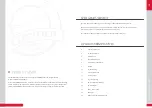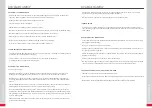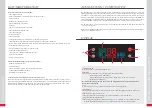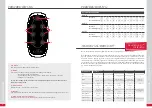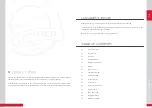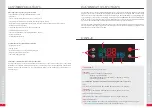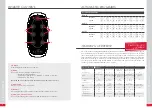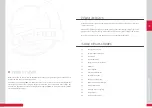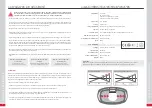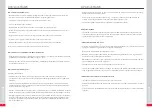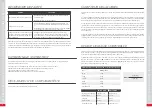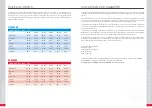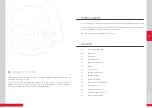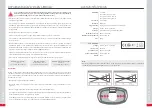
20
21
IN
d
IC
aTI
o
NS
OrtHOpAedic indicAtiOnS
• Back pain with various causes (pain relief through improved muscle relaxation, stretching and coordi-
nation, inhibited pain receptors)
• Posture damage (build up strength and improve posture)
• Scoliosis (improved stability)
• Foot deformities (strengthening of the foot instep muscles)
• Muscular power deficiency after being immobile, accident, injury (improved muscle performance)
• Muscular hypertension, to high muscle tension (reduced muscle tension)
• Slipped disc, if not acute (training the local muscle system)
• Degenerative diseases of the spine (pain relief, stability)
• Osteoporosis (improved bone strength and mass)
SpOrt-MedicAl indicAtiOnS
• Increased performance (muscle building, improved coordination, speed and flexibility, parallel to sport
type-specific training)
• Sports injuries (Improving the metabolism, quick mobilization of the damaged tissue, earlier start of
training)
neurOlOgic indicAtiOnS
Spastic paralysis:
• Parkinson‘s (reduced muscle tension and tremor, improved coordination and posture)
You can find more information under the topic: Parkinson‘s disease
• Multiple Sclerosis
regulation of muscle tension, improved posture, bladder-rectal control, increased muscle functions,
improved posture You can find more information under the topic: Multiple Sclerosis
• Stroke (Reduced spasticity, improved strength handling, faster mobilisation and rehabilitation)
You can find more information under the topic: stroke
• Paraplegia (tension regulation, training of arm and support muscles, coordination, relaxation, control
of movement and speed, support of treadmill training for incomplete paraplegia, distinct improve-
ment of performance and reduced side difference in gait)
inDications
IN
d
IC
aTI
o
NS
• Foot drop syndrome, e.g. slipped disc (improved motoric control and increased muscle performance)
• Plexus paresis, paralysis of arm nerves e.g. after motorbike accident improved motoric control and
increased muscle performance and muscle build-up
• Disturbances of equilibrium(improved balance and prophylaxis against falling)
internAl Medicine
• Arterial and venous circulatory disorders (PAVK)
(improvement through increased circulation, tension regulation of vascular wall muscles)
You can find more information under the topic: PAVK
gerOntOlOgic indicAtiOnS
• Loss of muscle mass and performance (increased power, power build up, improved coordination,
increased muscle performance)
• Osteoporosis (increased bone substance)
• Lack of exercise (improved mobility through strength increase and build-up, improved coordination
and balance)
• Decreased posture control (Build-up of muscles in global and local trunk muscles, improved posture)
• Urinary incontinence (improved urinary and faecal incontinence)
• Disturbances of equilibrium (reduced risk of falling through improved balance, strength and sensory-
motoric performance regarding posture and movement)
urOlOgic And gynAeOcOlOgic indicAtiOnS
• Incontinence (improved bladder-rectal control)
• Pelvic floor weakness (improved bladder-rectal control, reduced back pain)
• Spinal and pelvic instability following delivery (strength build-up and posture stability)
inDications


